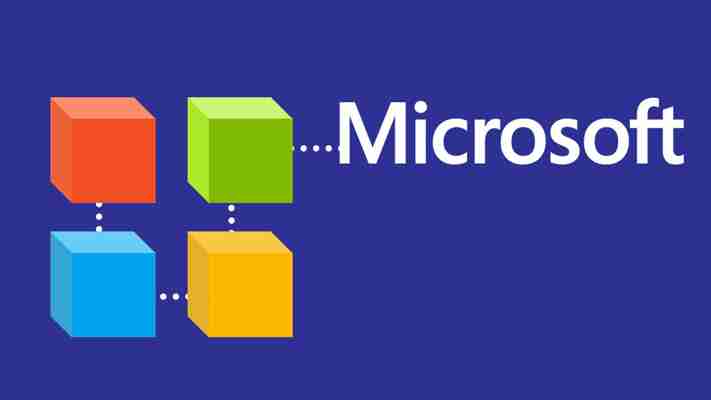Coinbase doubled its cryptocurrency lineup in 2018 — and that’s just the beginning
With yesterday’s addition of Zcash (ZEC), popular exchange service Coinbase has more than doubled its cryptocurrency lineup in 2018 – and by the looks of it, the trend is here to stay.

Up until August, Coinbase supported a narrow inventory of cryptocurrencies on its flagship desktop and mobile apps, including Bitcoin (BTC), Ethereum (ETH), Litecoin (LTC), and Bitcoin Cash (BCH), the last one of which was added last December.
But this year alone, Coinbase has already bumped its offering with five new currencies: Ethereum Classic (ETC), 0x (ZRX), Circle’s dollar-pegged USD Coin (USDC), Brave browser’s Basic Attention Token (BAT), and Zcash.
Indeed, all of these tokens made their way to the platform in the latter half of 2018, with four of these added in the last two months alone.
The trend is here to stay
The exchange desk, which previously employed a rather selective listing fee, opened up its application procedure to pretty much any token in the space back in September.
In response, cryptocurrency enthusiasts flocked to mercilessly troll Coinbase on Twitter. But despite the vicious ridicule, it seems cryptocurrency firms are taking advantage of the new listing policy.
Meanwhile, skeptics voiced concerns the move essentially signals the exchange’s plans to expand into offering security tokens – once regulators have actually worked out what defines a “security” in the context of cryptocurrencies.
Of course, Coinbase’s aggressive listing expansion comes as no surprise to cryptocurrency insiders, especially in light of its intention to explore a range of assets – more than 40 in count – for its Custody service .
In July, the exchange desk also shared a shortlist of cryptocurrencies it was considering adding to its flagship desktop and mobile apps.
Three out of the five assets discussed – namely, Basic Attention Token, Zcash, and 0x – have made its way to the service. The other two, still-unlisted assets were Cardano (ADA) and Stellar’s Lumens (XLM).
Coinbase and the regulators
The San Francisco-based exchange has long been eyeing the addition of cryptocurrencies, which could be considered securities. Indeed, despite numerous rumors of insider trading at Coinbase, the company has remained focused on this vision.
A few months back in July, Coinbase told Bloomberg it got the blessing of the US Securities and Exchange Commission (SEC) to close a trio of acquisitions that could allow the company to facilitate the trade of security tokens.
Buying out Keystone Capital, Venovate Marketplace, and Digital Wealth purportedly provided the exchange with the necessary licenses to operate as a broker dealer, an alternative trading system, and a legitimate investment advisor.
“Being approved to take ownership of these licensed entities is one more step toward our ultimate goal of allowing our customers to trade securities tokens on our platform,” Coinbase communications director Elliott Suthers told Bloomberg, with regards to the acquisitions. “There are many more steps and conversations needed with regulators before this journey’s complete.”
Days later, the company had flipped the script , claiming the SEC had nothing to do with the buyout. Not only that, Coinbase said it never needed SEC’s blessing for the acquisition – or for listing tokens that could be considered securities.
“I t is not correct to say that the SEC and FINRA approved Coinbase’s purchase of Keystone because SEC was not involved in the approval process,” Coinbase VP of communications Rachael Horowitz explained to Bloomberg. “SEC’s approval is not required for the change of control application.” Industry insiders were quick to second Horowitz’s claim.
The writing’s on the wall
In the meantime, Coinbase has been putting in serious efforts to push cryptocurrency mainstream adoption – and ease potential customers into feeling more comfortable with the concept of trading and HODLing .
In July, the exchange desk launched cryptocurrency gift cards so users can spend their crypto-riches in select malls and shopping areas in Italy, Spain, France, the Netherlands, the UK, and Australia. Weeks later in August, Coinbase rolled out a plugin designed to make it easier for online retailers to accept cryptocurrency.
In September, the company unveiled new crypto-bundles and discovery tools built to help newbies explore cryptocurrencies, get more familiar with the technology underpinning them, and perhaps make their first investment. But really, these tools made it dangerously easy to buy cryptocurrencies, which are associated with high risk and volatility .
Coinbase surely didn’t make these moves in vain – rather, it seems this was a carefully executed growth strategy on their behalf.
With this in mind, we shouldn’t be surprised with the exchange’s rapid expansion into altcoins. Instead, we should be asking ourselves one thing: what cryptocurrency’s up next?
Microsoft is developing blockchain tech that lets you manage your digital identity
Microsoft is out to prove blockchain naysayers wrong. In an effort to show the potential of the technology beyond its applications in cryptocurrency, the Redmond giant has announced plans to use blockchain tech as the foundation for storing and processing digital identity data.

Following a collaboration with the Decentralized Identity Foundation ( DIF ), Microsoft has revealed its plans to rely on blockchain technology to solve some of the challenges we face when managing our identities and personal data digitally, such as improving privacy and security across the physical and digital world.
“W e believe it is essential for individuals to own and control all elements of their digital identity,” the company said in a blog post . “Rather than grant broad consent to countless apps and services, and have their identity data spread across numerous providers, individuals need a secure, encrypted digital hub where they can store their identity data and easily control access to it.”
To this end, the company is developing an off-chain solution – akin to the Lightning Network – that will allow it to process massive volumes of ID data without congesting the blockchain network.
While the company has yet to demo working prototypes of its solutions, it has shared some findings from its jointly research with the DIF. In addition to its uses for cryptocurrencies like Bitcoin and Ethereum, the Windows-maker concludes that blockchain tech is well-suited for a number of other applications.
A key takeaway is that – instead of relying on third-party services and solutions – blockchain could prove instrumental in putting control back into the hands of the customer as well as securely storing personal data.
“ Today, users grant broad consent to countless apps and services for collection and retention of their data for use beyond their control,” the post reads. “With data breaches and identity theft becoming more sophisticated and frequent, users need a way to take ownership of their identity.”
How it actually works
For this reason, the company has proposed several new services:
Decentralized Identifiers (DIDs) – a W3C spec that defines a common document format for describing the state of a Decentralized Identifier
Identity Hubs – an encrypted identity datastore that features message/intent relay, attestation handling, and identity-specific compute endpoints
Universal DID Resolver – a server that resolves DIDs across blockchains
Verifiable Credentials – a W3C spec that defines a document format for encoding DID-based attestations
“ After examining decentralized storage systems, consensus protocols, blockchains, and a variety of emerging standards, we believe blockchain technology and protocols are well suited for enabling Decentralized Identifiers (DIDs),” the company writes.
According to Microsoft, these solutions “ can enable developers to gain access to a more precise set of attestations, while reducing legal and compliance risks (such as, GDPR, KYC/AML) by processing such information instead of controlling it on behalf of the user.”
The legendary software provider is quick to point out that, while blockchains are indeed suitable for such applications, current solutions like Ethereum, Bitcoin, and Litecoin still lag behind standard centralized alternatives – especially when it comes to matters of speed, convenience and network stability.
“ To overcome these technical barriers, we are collaborating on decentralized Layer 2 protocols that run atop these public blockchains to achieve global scale, while preserving the attributes of a world-class DID system,” Microsoft says.
The Redmond behemoth says it will share more technical details and proof of concept implementations in a series of upcoming posts.
The Decentralized Identity applications are slated to land on the Microsoft Authenticator app, which is already used by millions of people to prove their identity.
“ With consent, Microsoft Authenticator will be able to act as your User Agent to manage identity data and sign attestations,” the blog post explains. “In this design, only the ID is rooted on chain. Identity data is stored in an off-chain, encrypted data store that the user has full control over.”
Microsoft has long shown support for blockchain tech on a number of occasions.
Indeed, the technology titan was one among several corporations and banks to show ambition in developing commercial applications on the Ethereum network.
More recently, Microsoft was said to be partnering with the IOTA Foundation over its “next-generation blockchain” solution. The partnership ultimately proved to be nothing more than an informal collaboration between a client and a software provider .
Cryptocurrency scammers are luring victims with Tesla Model 3 giveaways
Another day, another scam. Cryptocurrency tricksters are now posing as disgraced security pioneer John McAfee to steal Bitcoin and Ethereum from unsuspecting users. But here’s the kicker: the scammers are using a shiny Tesla Model 3 to lure in victims.

“If you send in 2 BTC or 20 ETH, you will get the Grand Prize: a customized Tesla 3 model [sic] signatured [sic] by John Mcafee [sic], delivery included,” a fraudulent Medium post reads.
Only in this case, it’s not actually Medium, and it’s not John McAfee. The website and account are fakes. The URL is a dead giveaway, but the scammers have made an effort to disguise the copycat as a legitimate Medium page (though you can still spot the red flags). The domain itself was only registered two days ago, according to a whois lookup.
The scam directs users to send a small amount of BTC or ETH to verify their account, after which they will receive a greater amount of cryptocurrency in return. Sounds like a win-win!
Only this never happens. Typically you’ll give some BTC or ETH, and never receive anything in return. There are tons of comments claiming hefty profits, but these are, of course, all fake.
What’s more is that most of the links on the website are dead. Those that are working just redirect back to the main Medium homepage. Also, you cannot even comment on the post, indeed, most of these comments are hard-coded into the fraudulent copycat.
The good thing is it appears nobody has fallen for the promise of a shiny new Tesla yet. Hard Fork reviewed the Bitcoin and Ethereum wallet addresses promoted in the fraudulent post: neither of them have received any funds so far.
It seems Musk or McAfee’s names are never far away from cryptocurrency scams . Earlier this year, Twitter took action to block unverified users who change their names to Elon Musk.
Any scam that claims to give you money for nothing, is clearly too good to be true. Don’t believe everything you read on the internet.

Leave a Comment